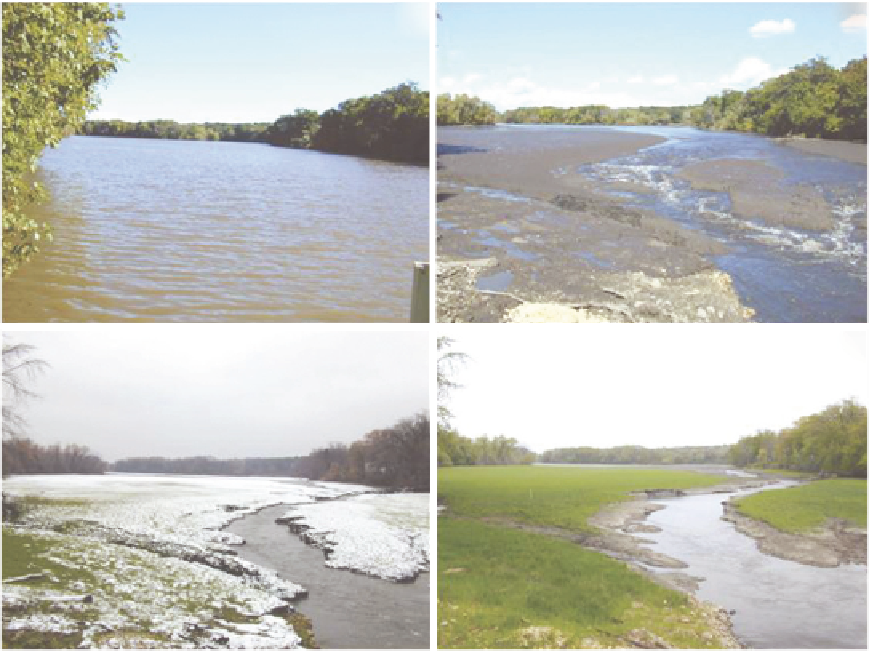Environmental Engineering Reference
In-Depth Information
(a)
(b)
(c)
(d)
FIGURE 14.1
Changes in the reservoir of Koshkonong Creek before (a) and 24 hours (b), 2 months (c), and
8 months (d) after removal of the low-head dam. (Modified from
Doyle et al. 2003b
.)
action provided us with the planned (and later, by studying more removals, replicated)
opportunity to examine changes in nutrient retention, as well as channel form following
the removal disturbance. But instead of focusing on the Vitousek and Reiners hypothesis,
we developed and tested a new model that emphasized how changing geomorphic form
and process alters nutrient retention (
Figure 14.2
;
Stanley and Doyle 2002
;
Doyle et al.
2003b
;
Orr et al. 2006
). The geomorphology-nutrient retention relationship was massively
amplified in the extreme case of dam removal, but we are learning that it also applies to
less extreme cases, and can help explain differences in nutrient dynamics across different
sites (e.g., see Lewis et al. 2006; Kaushal et al. 2008). No doubt there are any number of
other similar whole-ecosystem “experiments” that are now under way that could provide
basic ecological insights as well as practical information about ecosystem management.
Another concept from ecosystem science also provided us with important and unex-
pected inspiration for our dam removal research. One of the earliest lessons I had learned
about studying ecosystems was the simple importance of looking at the big picture and
figuring out what is and is not important. For example, in constructing nutrient budgets, we



